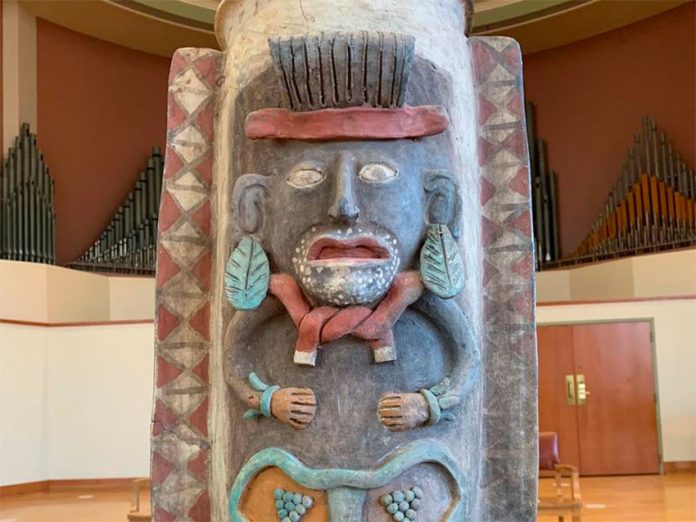A Mayan urn used for rituals in what is now Chiapas will be returned to Mexico after spending 50 years in the U.S. The urn was found in 1969 by professor Marvin Vann, who donated it to Albion College in 2003. In 2009, negotiations began for the urn to be repatriated to Mexico.
Representatives of Albion College and officials from the Mexican Consulate in Detroit signed the agreement for repatriation this week. The urn will be in Mexico in a matter of days, according to Elizabeth Palmer, head of the Albion College archives. It will be on display with its twin at the Museo de los Altos in San Cristóbal de las Casas, Chiapas.
“The recovery of this Mayan urn and reunification with its twin artefact represent an act of great importance for Mexico and its historical heritage,” the Mexican Foreign Ministry said in a statement.
The urn was stored for years in the Albion College archives until it was found by Joel Palka, a professor and Mayan art expert. He realized it was identical to one at the Museo de los Altos, which had been created between the years 900 and 1600. Using chemical analysis, researchers were able to establish that the urn in Michigan was made with the same materials and came from the same time period as the Chiapas urn. According to Josuhé Lozada of the National Institute of Anthropology and History (INAH), the urn “was made with the same clay and, probably, by the same artisan.”
Lozada said the urn was of great value due to the rarity of twin artifacts from the Mayan period, in addition to being a unique piece in terms of the iconography portrayed. The artifact shows a god related to trade and the underworld. The top part of the urn has a niche for the ritual burning of the aromatic wood copal, which “initiated communication with the deity.” The smoke acted as a conduit for prayer and requests, according to Lozada.
Lozada told the newspaper El País that the urn is also unusual because of the time in history when it was created. Most Mayan historical research focuses on the period of growth that the Mayan culture experienced between the years 600 and 900, and often involves the Mayan pyramids. This urn, however, is an example of popular culture from a later period, and has a different design. It could give insight into a lesser-known period of Mayan culture.
“Repatriations are not always sad stories,” Lozada said, noting that the urn was taken from Chiapas in 1969, just before a 1972 law declared that artifacts could not be removed from the country without authorization from the INAH. On the contrary, the return of the item could serve as an example for other nations.
Around 9,000 pre-Hispanic art objects can be found scattered through European and American museums, according to a 2012 study. Mexico has engaged in ongoing efforts to bring Mexican artifacts back home, and in 2020 Beatriz Gutiérrez Müller, historian and wife of President López Obrador, toured Europe asking for various Mexican archaeological items to be loaned back to their country of origin. Mexico also recently secured the return of 280 artifacts from the U.S., mostly stone objects taken from present-day Sonora.
